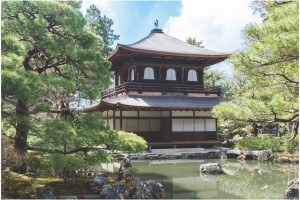Lisa Niver's Blog: We Said Go Travel, page 412
March 10, 2014
Transylvanian Time Travels in Romania
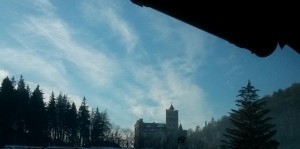 “The road is not silent. It has a language of its own, heart-piercing and true, and faithful to travelers. The road is refuge. It is hope. It is absolution.”
“The road is not silent. It has a language of its own, heart-piercing and true, and faithful to travelers. The road is refuge. It is hope. It is absolution.”
My great-grandfather’s words stare gravely at me from the height of heroic times, and I feel small, undeserving. The letters are uneven, the paper – crumpled – the entire page a painful, but dignified sign of great torment. I stare up at the snowy peaks of the Bucegi mountains, rising steadily in front of me from the cool morning mist, and imagine my great-grandfather and his two friends making their way across the steep passes. Their first sight of Home after long years of war, and wandering, was the tiny village of Bran, waking up to its daily millennial chores, as it does now, all around me.
I have been to Bran many times, but my most poignant memory of it is the childhood image of the Castle appearing from beyond the mountain side, proud and unmoved, like the soldiers who had delivered Transylvania back to Romanians during World War I. My great-grand father was one of those people, and the words I’m reading were the last ones scribbled in his make-shift travel diary, as he made his long way home from far away fronts. A peasant woman passes me in a hurry, obeying the imperative call of the church bells. I look at her feet, and see that she’s wearing opinci, traditional Romanian shoewear. They are made of a single rectangle of cow, ox or pig hide gathered round the foot, and one can find them at street fairs in Bran and other parts of Romania as souvenirs. The people who buy them nowadays, however, rarely know their meaning, or their history. My great-grandfather’s feet were bleeding when he arrived – and he proudly remembered he had “broken” 3 pairs of opinci on his way home. I remember him grey, but lively-eyed, holding one of the shoes in his hand, and telling me “A single piece of cow hide. Just like our country is one. That’s what we fought for, what we died for!”
I smell Kurtoskalacs roasting in the distance, so I gather my things and start walking towards Marcela and Virgil’s house. They are my hosts almost every time I come to Bran, as my family moved to Southern Romania short after my grandmother was born, and their house no longer exists. Marcela and Virgil operate what’s called a “Pensiune”, a cross between an inn and a bed and breakfast. Highly popular, especially with foreigners, they combine the best of Romanian hospitality and low prices. As a matter of fact, Bran is not the place for big, posh hotels. For that, people go to nearby Brasov or Sinaia. The village stubbornly retains its heritage and small, quiet life. “There is nothing pretentious, nothing fake about it!” I muse to myself while Marcela lays a plate of steaming Kurtoskalacs in my lap. As I look towards Bran Castle, however, the bite I just took turns sour in my mouth – the building, a historical and cultural landmark, has had the wrong introduction to the world: it is known to most of those outside Romania as Dracula’s Castle, and surely enough, an entire industry of cheap souvenirs (I am especially horrified by the vampire face mugs) has sprung up to cater to tourist tastes. I have run along its corridors as a child, marveled at the portraits of the Romanian Royal Family, which kept the Castle as a temporary residence, and cursed Bram Stoker in my mind for clothing Transylvania in such a twisted, horror-Goth mantle. There are kids running around me in fake blood-stained T-shirts, frantically taking photos and screaming in all languages of the Earth. There are sometimes also filming crews, shooting some clip for a famous artist, or a part of a movie. I see nothing of that. I see only the old forests shining red, like a blood confession – not the kind dripping from sharp fangs, but the one smeared on my great-grandfather’s last diary page. I realize he wrote those words when he did not know if he would ever see home again. That he hoped for the road to deliver an absolution from all the horrors of the war, that he had seen and perhaps done himself.
To say I spend time at Bran is a lie, because time here is never “spent”. It does not flow, nor diminish, nor dissipate. It inhabits this ancient village hidden in the mountains as fully and truthfully as the history from which it was born. And all its secrets will inhabit you as well, the wise traveler who shuts his soul from modern noise, but keeps it open for the stories of its people, those still here, and those living in the blue mist adorning the Bucegi mountains and the smell of Kurtoskalacs.
About the Author: Adriana Popa graduated with High Honors from Swarthmore College in May 2012, and has lived, worked and studied on three continents. She is currently buying her time in the “real world” before returning to academia (Columbia University, for graduate school). She finds inspiration in the framed message hanging over her desk: “Live, write, travel”.
Thank you for reading and commenting. Please enter our next Travel Writing competition and tell your story.
The post Transylvanian Time Travels in Romania appeared first on We Said Go Travel.
March 9, 2014
Lost and Found in Mexico
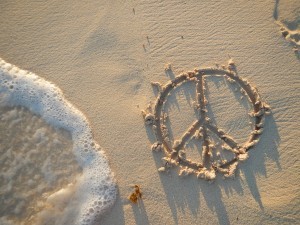 Many of us spend a great deal of time planning our vacations. Where are we going? What are we going to do?…and what happens? A schedule develops. We’ve all done it. Heck, I have gone so far as to create elaborate itineraries and laminate them – one for each traveler on our trip. What this does is set you up for stress. You have to set alarms to be able to get in all the day’s activities. If there is something wonderful and unexpected at one of the places on your agenda for the day, you will likely have to miss out because if you take the time to enjoy, you will be off your schedule and THEN WHAT?! Well what happens is at the end of your trip? You evaluate – “did we see and do everything according to plan?”, if not you will feel like you have somehow failed. If you did get it all in, then you will start thinking about all of those wonderful things you missed, that you didn’t know about beforehand, but had to skip because they were not scheduled! Ultimately – some level of disappointment, not to mention you come home exhausted.
Many of us spend a great deal of time planning our vacations. Where are we going? What are we going to do?…and what happens? A schedule develops. We’ve all done it. Heck, I have gone so far as to create elaborate itineraries and laminate them – one for each traveler on our trip. What this does is set you up for stress. You have to set alarms to be able to get in all the day’s activities. If there is something wonderful and unexpected at one of the places on your agenda for the day, you will likely have to miss out because if you take the time to enjoy, you will be off your schedule and THEN WHAT?! Well what happens is at the end of your trip? You evaluate – “did we see and do everything according to plan?”, if not you will feel like you have somehow failed. If you did get it all in, then you will start thinking about all of those wonderful things you missed, that you didn’t know about beforehand, but had to skip because they were not scheduled! Ultimately – some level of disappointment, not to mention you come home exhausted.
After this happened to me a few times, I thought what if I went on a vacation with no plans, no schedule, no itinerary? I heard about a place in Mexico called Akumal. About an hour from the Cancun airport, this small village had no all-inclusive resorts, a handful of condos for rent, and very little else. I turned to my partner and said, “Let’s go.”
First, going on a vacation, not knowing what to expect, you would think I would have been nervous BUT if there is one thing my cat has taught me it’s to think outside the box. We arrived, we got a cab, and we were off. An hour later we arrived. The village consisted of 3-4 places to eat, a couple of grocery stores, and condos sitting right on the beach of Half Moon Bay. We were dropped off at our destination condo rental, with no car and no idea what we were stepping into.
So what did we find? A place so inspiring that it is now where I go, in my mind, to meditate. Water so blue and so clear that I felt a sense of calm wash over me every time I looked at it. Beaches that were quiet and unpopulated – where you could sit and take in the wonder of the world and feel blessed to be in the moment of each and every day. Where you can sit and read a book or close your eyes and listen to the waves break and the birds celebrate their good fortune to call this place home. Places to eat where you literally get a taste of culture and an opportunity to mix with the locals. You can watch fishermen come in on their boats, clean the fish on the beach, and offer up the day’s catch in their great dishes. I wonder, as I watch them, if the beauty of this place escapes them since they wake up to it every day.
Talking to a local I learn that Half Moon Bay is a prime nesting place for turtles. The locals watch and protect the eggs in an effort to ensure as many survive as possible. In turn then, when visitors put on their snorkeling gear, it is very common to find yourself swimming with these beautiful creatures. As I floated over the top of one, watching him eat ocean vegetation and majestically swim around, I found myself mesmerized by the grace and beauty. He had not a care in the world – kind of like me in that given moment.
So many times we are consumed by trying to make sure we have THE best trip, that we lose all the wonderful opportunities afforded by doing, planning, and paying nothing. On this trip I lost my track of time, I lost the need to schedule, and I lost my stress. I found that walking everywhere comes with a great sense of freedom. I found that love is deepened by time spent doing nothing. Most importantly, I found PEACE.
About the Author: Jonna J Cooley PhD lives in Springfield IL with her partner Lisa and their 7 cats. Jonna has worked in social services for over 25 years, working with child abuse, HIV/AIDS, and the LGBT community as well as teaching at the University of IL for 14. Besides travel, she loves photography, bicycling, and animals of all kinds.
Thank you for reading and commenting. Please enter our next Travel Writing competition and tell your story.
The post Lost and Found in Mexico appeared first on We Said Go Travel.
MY TRIP TO ORLANDO
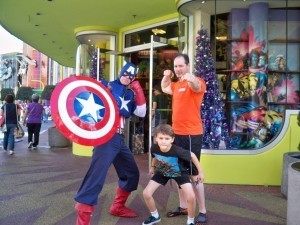 Orlando inspires me to use my time wisely because there’s so much fun stuff to do. We went to a theme park every day. We’d get up early and we regularly went to a breakfast buffet so that we could eat a lot so that we would be full for several hours.
Orlando inspires me to use my time wisely because there’s so much fun stuff to do. We went to a theme park every day. We’d get up early and we regularly went to a breakfast buffet so that we could eat a lot so that we would be full for several hours.
These are all the parks that I went to: Hollywood Studios, The Magic Kingdom, Animal Kingdom, Epcot, Universal Studios, and Islands of Adventure.
One of my favorite rides was Big Thunder Mountain Railroad at The Magic Kingdom. It was like an old-fashioned train ride, but went really fast. They also had a ride called Splash Mountain, which is basically a roller coaster but on water. My whole family went on it, and boy you should have heard my grandma scream!
At a theme park called Epcot they had a international food festival. At the food festival they had all these different foods from different countries. The food there was delicious. My mom enjoyed the samples of different wines.
At another park called Hollywood Studios, they had a ride there called Star tours. It was a simulated ride, and my dad and I went on it something like seven or eight times. Each time it was different, and then when we exited there was a station where you could build your own light saber. It was cool!
We celebrated my birthday in Orlando and I got a brand new Lego set. And where did I get my brand new Lego set? I got it at Downtown Disney, another part of Disney World that was for shopping, but it looked like a theme park with all of its huge colorful buildings. They also had a Lego store down there to. They had a whole bunch of Lego displays at the Lego Store of different Lego characters. They were huge—bigger than real-life people. There was a huge Lego Hulk on display that kids had cooperated to make. I even made a piece of it, but because we wanted to go to a whole bunch of other theme parks, we didn’t have time to come back and see it finished.
At a theme park at Universal Studios called Islands of Adventure they had an awesome 3D Spiderman ride. They also had people dressed up as superheros that were in a parade through the streets. Me and my dad even got our picture taken with a few of them.
Even though we did so many fun things, there were a lot of things I wanted to do that we didn’t have time for. There were more theme parks like Legoland, Sea World, and different water parks at Disney World. I also wanted to go to a swamp so I could see some alligators, but I’ll have to save all of these things for next time.
Even at the hotel there where things to do, like me and my uncle went lizard hunting and found some lizards and geckos. One thing that I wanted to do was go into the pool at the hotel but it was too cold during that November.
There were souvenir stores there too and we brought back Lego key chains for my friends, and my mom and dad bought glasses, pens, and shirts for their friends. I got some superhero T-shirts that you couldn’t find anywhere else.
As you can see, there were a lot of things to do in Orlando. We would usually spend all day at a theme park. Sometimes we would stay up to fourteen hours, getting back to our hotel around midnight, and I still didn’t get to see everything! I hope to travel to Orlando again one day, and now that I know what to expect, I’m sure I will be able to see even more in a short time.
About the Author: Teddy Kewin is ten years old and lives in British Columbia, Canada. He is homeschooled and enjoys reading, judo, building Lego, and hanging out with his friends. For the last three years he has completed the NaNoWriMo challenge of writing a novel in thirty days. This year he wrote over eleven thousand words in one month.
Thank you for reading and commenting. Please enter our next Travel Writing competition and tell your story.
The post MY TRIP TO ORLANDO appeared first on We Said Go Travel.
The Dargah of Hazrat Nizamuddin, India
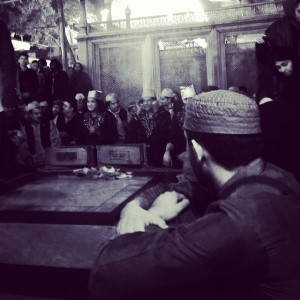 On a cold winter’s night, when the stars lay across the sky, my friend and I decide to visit to Hazrat Nizamuddin Auliya’s dargah. It’s Thursday and the entrance to the dargah is swarming with pilgrims. Wires twist like tendrils around a forlorn lamppost at a distance. Translucent-winged creatures whirl around like Sufi saints lost in prayer. There is a spell of the theatrics. In a corner, a shoe-shiner with weary eyes argues with a man for an extra coin; a bald hawker wearing a taqiyah slips off a slipper from his cart and offers it promptly to a passerby. Men stroll at an unhurried pace; women, burqa-clad or otherwise, bolt past; arms shielding their bodies. Perhaps they are wary, perhaps it is the winter chill. As we needle our way through the crowd, we pass a busy bookstore of Urdu books. We pass a barbershop with pale yellow walls and circus mirrors. We pass the solemn and gated Ghalib’s tomb.
On a cold winter’s night, when the stars lay across the sky, my friend and I decide to visit to Hazrat Nizamuddin Auliya’s dargah. It’s Thursday and the entrance to the dargah is swarming with pilgrims. Wires twist like tendrils around a forlorn lamppost at a distance. Translucent-winged creatures whirl around like Sufi saints lost in prayer. There is a spell of the theatrics. In a corner, a shoe-shiner with weary eyes argues with a man for an extra coin; a bald hawker wearing a taqiyah slips off a slipper from his cart and offers it promptly to a passerby. Men stroll at an unhurried pace; women, burqa-clad or otherwise, bolt past; arms shielding their bodies. Perhaps they are wary, perhaps it is the winter chill. As we needle our way through the crowd, we pass a busy bookstore of Urdu books. We pass a barbershop with pale yellow walls and circus mirrors. We pass the solemn and gated Ghalib’s tomb.
As we delve deeper into this oceanic splendour of lights, people and colour, I become exceedingly fascinated and curious. There are teasing whiffs of charcoaled meat and parathas. Brightly lit shops push and squeeze into one another. There are chadars—emerald green, tangerine and wine red with golden borders on display. Rose petals—plucked, pink and fleshy—rest in baskets. Shop owners sit cross-legged at the edge, handing out business cards. A few of them call out, asking if we would like to leave our shoes behind. “Ignore them,” my friend says. “There is a stall up ahead, closest to the dargah. We will leave our shoes there.” He then tugs my dupatta that I have slung across my shoulder. We are nearing our destination. It is time to wrap it around my head in respect.
We reach the stairs: a descent we must make, and I am caught off guard. There is a sudden flurry of people. I hold on to a wall while my feet try to find grounding. When the crowd trickles away, it lays out a perfect image before me: worshippers, curious tourists, pirs and pirzades, buoyant across a sea of white marble like coloured boats. There is a startling energy here. As we descend, before us lies the shrine of Amir Khusrau, a gifted poet and Hazrat Nizamuddin’s favourite disciple. My friend directs me to a washing ground where men and women cleanse their hands and feet. A few feet away, I hear something: a tuning of a harmonium, a staccato of claps searching for a rhythm, someone clearing his throat, a shuffle in the crowd. I quicken my pace, steering myself in the direction of the mehfil.
In an open courtyard, facing the mausoleum of Hazart Nizamuddin, the Qawwals have settled down for the evening serenade. About 80-100 odd people sit cross-legged in anticipation, framing the Qawwals from three directions. We negotiate our way through the crowd hawk-eyeing for a perch. Hazrat Nizamuddin’s tomb is a fascinating structure, characterized by marble pillars and trellis for walls. Orange threads weave in and out of the trellis. The threads symbolize mannats, wishes of thousands who visit the dargah. I notice a yellow board with a green border that hangs at the grilled entrance of the tomb. It cautions: ‘Ladies are not allowed inside.’ Outside the tomb, a few women mumble something repeatedly and kiss the walls; another cluster of women sits with children in tow, reading diligently from books in hand.
My attention is diverted. The Qawwali has begun and I settle at the edge of the gathering. A man stands guard: his job is to ensure that a human wall isn’t constructed between Hazart Nizamuddin and the Qwwals. He ushers people to either sit or walk by. “They are singing Tajdar-e-haram,” my friend leans over to inform. I nod and take out my phone to quickly jot down the lyrics:
Kismat mein meri chain se jeena likh de
Doobe na kabhi mera safeena likh de
Jannat bhi gawaara hai magar mere liye
Eh kaatib-e-taqdeer madina likh de
I request my friend, who is more informed about Hindustani poetry than I, to translate and he obliges:
Write, in my fate, the ability to live peacefully
Write, in my fate, that my paper boat must never sink
I would accept jannat (paradise), but for me,
Oh writer of destiny, at least write down the city of Madina
The evening eventually comes to an end and the crowd disperses. My friend and I decide to take a long, leisurely stroll around the tomb, observing the people and the ritual of prayer. “I did not know that ‘safeena’ meant paper boat,” I tell him. “The word is beautiful.” He smiles knowingly. It has become colder and we must leave. We make our way to the exit, merging into the crowd, passing Ghalib’s tomb, the library, the chaiwallas—returning to reality.
About the Author: Radhika Iyengar works as a Deputy Editor for a creative arts lifestyle magazine called, Platform Magazine. She has done her Masters in Mass Communication from Sophia Polytechnic, Bombay, where she studied documentary filmmaking. Her other avatar is that of a photographer, where she tries to give a visual expression to her writing. She lives in New Delhi.
Thank you for reading and commenting. Please enter our next Travel Writing competition and tell your story.
The post The Dargah of Hazrat Nizamuddin, India appeared first on We Said Go Travel.
March 8, 2014
Costa Rica: My Inspiration and My Nature
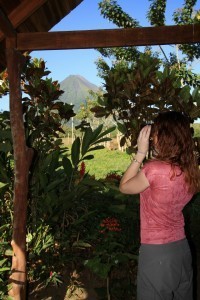 I find it beautifully ironic that I stumbled upon this travel writing contest the day before a significant anniversary in my life. It’s an anniversary I share with my significant other: nature. February 12th will forever be my “quit-aversary,” that is, the day I quit living someone else’s life and started living my own.
I find it beautifully ironic that I stumbled upon this travel writing contest the day before a significant anniversary in my life. It’s an anniversary I share with my significant other: nature. February 12th will forever be my “quit-aversary,” that is, the day I quit living someone else’s life and started living my own.
After the bulk of a decade working in law firms, I couldn’t stand the feeling that I should be doing something else, somewhere else, any longer. On February 12, 2013, I walked out of my office on the 33rd floor in downtown Chicago and never looked back. The next day, I hopped a flight to Costa Rica. This journey signified a huge turning point in my life. It’s where I felt closest to nature, and at 30-years-old, finally discovered what I’m passionate about.
During my time in Costa Rica, I discovered a passion for animal conservation that I never took time to realize I while pushing papers around a cubicle. This inspiration came to light as I spent time observing and photographing howler monkeys in their wild habitat. For the first time in years, I found the ability to look outside of my own insignificant preoccupations and see the larger picture of what matters in our universe.
As my Costa Rican adventure came to a close, I began putting my passions to work through my writing and volunteerism. I began writing about animal conservation causes on the petition activism site, Force Change. I am a full-time freelance writer now, and I contribute to several other publications related to the environment, sustainable travel, and natural health. I document my travel adventures and lessons learned along the way on my blog, Alyssa v. Nature (http://www.alyssavnature.com/). I have Matador U’s travel writing program (completed May 2012) to thank for bolstering my journalism skills and helping me build a new career on my own terms.
Since November, I have been working with Chicago Canine Rescue, a local no-kill shelter in desperate need of volunteers. Last month, I traveled to Louisiana to visit Chimp Haven, a chimpanzee sanctuary that provides homes for primates rescued from inhumane research laboratories and private homes. I plan to participate in Chimp Haven’s on-site resident volunteer program later this year.
Costa Rica holds will always hold a special place in my heart, as it brings out my passions in a way no other place ever has. It inspires me to step outside societal expectations and live a life that I’m proud of living. As a freelance writer, I don’t make a lot of money, I don’t have any employment benefits, and my family still doesn’t really understand what I do.
However, my inspirational journey has opened my mind to the plausibility of long-term travel and the potential it holds for volunteerism and personal growth. Over the past year, I have to explore some of this nation’s most beautiful and inspiring places in Montana, Wyoming, South Dakota, Vermont, New Hampshire, Texas, Louisiana, and Arkansas. I’m excited to see what 2014 will bring and what new places will inspire me to make the most of my time with no regrets.
About the Author: Alyssa is a Chicago-based freelance writer and outdoor adventurer with a restless spirit and an odd obsession for gnomes. Propelled by the force of her trusty Jeep, she loves camping, climbing, kayaking, and snowboarding at America’s most inspiring places.
Thank you for reading and commenting. Please enter our next Travel Writing competition and tell your story.
The post Costa Rica: My Inspiration and My Nature appeared first on We Said Go Travel.
A night with Charlie in Jamaica
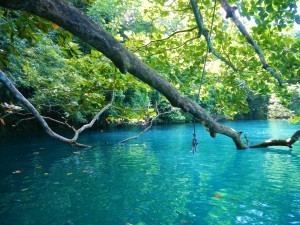 Gurgling and gasping for air I finally surfaced. Shooting pain surged through my legs and back forcing me to float as flat as possible, the transparent water surrounding me. Adrenaline rushed through me as I heard the muffled screams of victory from my newfound friends on the yacht in front of me, their shouts almost drowned out by the soothing reggae beats playing in the background, a sound I had become so familiar with during my time here. As I floated staring up at the sky, it seemed in a matter of seconds the beautiful blue changed into exquisite shades of purple, pink and orange transforming the jagged cliffs right before my eyes, like fire consuming everything it touched. Had I really just jumped off that 30ft cliff in Rick’s Café in Negril? Indeed I had and I’ve never felt more alive!
Gurgling and gasping for air I finally surfaced. Shooting pain surged through my legs and back forcing me to float as flat as possible, the transparent water surrounding me. Adrenaline rushed through me as I heard the muffled screams of victory from my newfound friends on the yacht in front of me, their shouts almost drowned out by the soothing reggae beats playing in the background, a sound I had become so familiar with during my time here. As I floated staring up at the sky, it seemed in a matter of seconds the beautiful blue changed into exquisite shades of purple, pink and orange transforming the jagged cliffs right before my eyes, like fire consuming everything it touched. Had I really just jumped off that 30ft cliff in Rick’s Café in Negril? Indeed I had and I’ve never felt more alive!
My time in Jamaica had taught me to look for the beauty in every situation and to stop and appreciate every moment. A few weeks earlier I had been asked the question by a nine year old “How long is a moment?” I told her “ A moment can’t be measured by a certain amount of time, it could be a second or it could be a lifetime. All I know is we need to treasure every one of them.” In Jamaica I had found a place where I didn’t regret stopping and embracing that treasure.
So I spent my 3 weeks in this mysterious and magical country treasure hunting. Like usual I ditched the safe version of travel and avoided the resorts. I wanted the cheap street side jerk chicken, to learn Jamaican patwa and culture from the people and to discover the uniqueness of a secret unkempt bay. I wanted to be completely oblivious to the hours going by as I sit and take in picturesque views, play games with the small children and lap up the heavenly water.
The Jamaicans have an amicable attraction. They inspire you, even if it’s just from the way they dance. There is an alluring desire to converse and form a friendship with them and not in a fearful way like many who have ventured to this land may suggest.
One evening on the drive home famished from a day of scaling a waterfall at the divinely infamous Dunn’s river falls, I pulled into a grimy run-down driveway, this turned into a small parking lot surrounded by shabby beach shacks. My first instinct was to pull straight out from there and find a more tourist friendly upscale restaurant area as my friend and I were going to be the only non-Jamaicans in sight. But instead, I proceeded to step out of the car and found the best local seafood at what I came to know as fisherman’s beach. Fresh Lobsters, avocados and festivals (sweet bread) were laid out for us with a stunning view of Ocho Rios. Small boats, translucent water and trees surrounding the rickety restaurant kept my attention all evening and our young host Charlie the fisherman, entertained us with his captivating thoughts. “White people aren’t always brave enough to come to fisherman’s beach” he explained, “Jamaica has a bad reputation and they stay in their resorts, they may come to this country but they don’t know Jamaica and they never will”.
We spent our evening in the fisherman shambles laughing and listening to life lessons from Charlie, learning about the culture and what it would be like to grow up in Jamaica. Realising again that it is the people here that had made my time so memorable. That night with Charlie I wouldn’t trade in for anything. It was the Charlie’s of Jamaica, the ones that just wanted you to taste their food or see their view, experience their Jamaica and listen to their story that made my time so unforgettable. The times you spend with the Charlie’s in this world are never regretted.
Take a risk. Turn off the beaten track. These will end up being the remarkable memories you collect that will become your treasure for a lifetime.
About the Author: Hannah Watkins – Travel Writer
Hannah has spent the last seven years living, working and studying in Sydney, Australia where she worked professionally in the corporate event industry.She is a recent full-time traveller deciding to quit the rat race and explore the world. She hopes to inspire people to live their dreams as she lives out her own. Only new to the writing game she hopes to captivate people with the lessons learnt and the stories gained from the traveller’s road.
Thank you for reading and commenting. Please enter our next Travel Writing competition and tell your story.
The post A night with Charlie in Jamaica appeared first on We Said Go Travel.
Hooping in Hawaii for Happiness
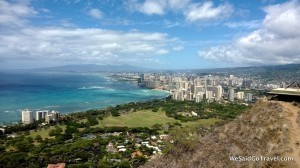
Waikiki, Hawaii
During my first hula-hoop class I was not happy because the hoop often dropped on the ground. Our instructor, Tisha, reminded us to be gentle with ourselves; each time we picked up the hoop, she instructed us to tell ourselves something nice. My internal monologue grumbled as I initially thought my friend Amy was right. What was I doing wasting my Saturday morning trying to hoop? It seemed ridiculous until the hoop began gyrating around my torso. Not only did I feel accomplished, but it was fun!
Positive self-talk is supported by the latest research from Shawn Achor, an award winning Harvard Professor. In his recent book, Before Happiness, he states: “Before happiness and success comes your perception of your world. So before we can be happy and successful, we need to create a positive reality that allows us to see the possibility for both.” Tisha taught the class to construct an alternate reality where we could be successful. Anchor explains: “If you can open your eyes to more positive details, you will have not only high positive genius but also the greatest possible buffer against down times.” As we complimented ourselves each time we reached down to pick up the hoop, we were mapping a new world of positive outcomes.
I had no idea at the outset when I picked up that hoop in class that I would not only end up owning a giant custom hoop but later travel around the world with a collapsible hoop anchored to my backpack. After learning a few basic techniques, I hooped up to 30 minutes while watching television or listening to disco tunes. At my elementary school during recess duty, I hooped with my fourth grade students. They were thrilled to hula-hoop with a teacher. We invented a game of football toss-pass while hooping in a circle. Our dedicated group eventually made 200 tosses in succession without a drop. Each Friday afternoon we focused on improving our record by encouraging each other. Anchor shares: “Positive genius is all about focusing more of your brain and its resources on success rather than on failure.” Whether learning a new skill like hula-hooping or teaching physics lessons to students, preparing for accomplishment creates a better map to your goals.

Outrigger Reef on the Beach, Waikiki
Photo Credit: Outrigger Hotels and Resorts
When I left Los Angeles in 2008 with my boyfriend George on a year long sabbatical, I was in the process of losing weight. After getting married to George in 2009, I kept the weight off by walking two miles each way to work daily. In July 2012, we departed on another long journey. Almost a year into this second sabbatical, I purchased a hula-hoop in the game aisle of Big-C, Thailand’s Walmart. The hoop was child’s size in circumference and I was out of practice. It took a bit of practice, but within no time I was hooping 30 minutes on the beach each day.
Hooping is an exercise that utilizes core stomach muscles, requires concentrated balance and it truly makes me happy. Anchor illuminates: “Positive geniuses know that to see the things others miss we must step back and take a departure from the way we have lived life up to this moment.” Due to my willingness to try something new and take a group class, I learned a new hobby. Even though a few teachers deemed hooping with our students as foolish, the children thrived from the attention and for me, it became a favorite part of the workweek. In the hula-hoop circle, we were all equals. Many of the students had the opportunity to turn into teachers; they taught me new tricks and proudly showed off their skills.

Stay at the Outrigger Reef on the Beach
Photo Credit: Outrigger Hotels and Resorts
During our sabbatical travels, hooping has become a great way to meet new people. While staying at the gorgeous Outrigger Reef on the Beach in Honolulu, we went for a stroll on Waikiki beach and saw monk seals. Later we tried out SUP Paddle boarding using our Smart Destinations Go Oahu cards.. In the evening we went to a delicious dinner at Ocean House Restaurant with our new friends, Nancy and Dan. My husband loved the edamame humus that nicely accompanied a variety of delicious fish and beef dishes. Friday night fireworks on the beach could be seen from our seats at Ocean House Restaurant where we had earlier marveled at the stunning sunset!
Nancy informed us about entertaining and educational activities in the hotel and at Waikiki Beach Walk, most notably the hula-hoop exercise dance class Saturday afternoons at 4pm. The teachers, Saarika and Kate, the duo behind Twirling Girlish, arrived with their families and friends, armed with over thirty hoops in a variety of sizes and colors. We were swept up into a storm of circles, forming a hula-hooping frenzy. With a large hoop and encouragement, even my husband George was hooping among the mix.
Not only did we have a wonderful time, but also learned new tricks. It was so fun to hoop together with the group. The instructors invited us to Sunday Circus Jam during sunset on Waikiki beach. When we arrived a day later, we were greeted like family. We participated in the various circus activities and even helped film the video for World Hoop Day. This evening would be the final sunset of our second sabbatical year abroad but while hula-hooping together, I knew many more days of travel, happiness and friendship were on our horizon.
“There are only two ways to live your life. One is as though nothing is a miracle. The other is as though everything is a miracle.” Albert Einstein
About the Trip: Lisa and George would like to thank the Outrigger Hotels and Resorts as well as the Oahu Visitors Bureau for their generosity. All opinions are ours and we highly recommend you visit Hawaii as soon as possible to enjoy SUP, hula hoop jam and whatever makes your dreams come true! We have added the new Outrigger Mauritius to our bucket list! Maybe we will see you there!
Lisa Niver Rajna and George Rajna are authors of Traveling in Sin and founders of We Said Go Travel. They are accomplished writers, speakers and travelers who are members of the Traveler’s Century Club, a unique travel club limited to travelers who have visited one hundred or more countries.
Enjoy all our Hawaii videos!
This article was first published on the Jewish Journal.
The post Hooping in Hawaii for Happiness appeared first on We Said Go Travel.
Under the Rainbow Parachute in Liberia
 Picture a country overwhelmed with a desperate sort of poverty and an even more desperate beauty filled with longing and humming with the undercurrent of a people trying to survive. It’s a country that challenges one’s emotional stability, meaning that every intense emotion known to man will be felt there, sometimes all within the space of one short hour, and well-grounded ideals. Liberia has been torn at the seams by a bloody civil war and the scars of that are still evident and sorrowful, yet hopeful. It’s almost as if the entire country is singing a song of hope for tomorrow; for strength and having stared in the face of death and made a recovery. Here, relationships are far more important than than the busy, consumerism nature so evident in the West, possibly because they’ve seen how easily those relationships can be taken away. Now, picture within that country a tiny orphanage with a giant mango tree sprouting right in the center of the property and brown dirt surrounding it.
Picture a country overwhelmed with a desperate sort of poverty and an even more desperate beauty filled with longing and humming with the undercurrent of a people trying to survive. It’s a country that challenges one’s emotional stability, meaning that every intense emotion known to man will be felt there, sometimes all within the space of one short hour, and well-grounded ideals. Liberia has been torn at the seams by a bloody civil war and the scars of that are still evident and sorrowful, yet hopeful. It’s almost as if the entire country is singing a song of hope for tomorrow; for strength and having stared in the face of death and made a recovery. Here, relationships are far more important than than the busy, consumerism nature so evident in the West, possibly because they’ve seen how easily those relationships can be taken away. Now, picture within that country a tiny orphanage with a giant mango tree sprouting right in the center of the property and brown dirt surrounding it.
Within that orphanage are a couple dozen children with the most heartbreaking stories and the brightest smiles all rolled into one. My job is to love them. I run around kicking a soccer ball with them or throw them in the air to the sound of their squealing laughter or read them stories or help color a picture. I teach them how to be kind and encourage them to dream big dreams of a future lived in a nation will not make life any easier for them.
On one particular day when nothing out of the ordinary seemed to be happening, I was playing with two little boys; helping them reach leaves on the giant mango tree or playing an impromptu game of tag, when I suddenly noticed there seemed to be less kids running around than usual. It was not but a couple of minutes later that I heard the sound of a dozen or so children singing with their beautiful child voices at the top of their lungs. I looked around, expecting to see a small group of them sitting on benches nearby. They weren’t there. They didn’t seem to be anywhere. Then, at the farthest corner of the orphanage I saw the giant rainbow parachute we had brought that day. It was in a perfect oval and radiating with the sound of singing, for underneath it sat children, wrapped up in their own little world of perfectly blended voices and nothing of more importance than remembering the right words, and even that was not a very big deal. It was beautiful and all I could do was stare and listen. It was like no matter what was going on in their country or their world, they were safe under that parachute for the time being. Nothing could touch them. Nothing else mattered except enjoying and living that one moment. I was completely and utterly mesmerized.
About the Author: My name is Sarah Blosser. I live in East Texas but have had the opportunity to travel all over the world including China, Thailand, and Liberia. I would love to continue traveling in the future and hope to work with areas of social justice.
Thank you for reading and commenting. Please enter our next Travel Writing competition and tell your story.
The post Under the Rainbow Parachute in Liberia appeared first on We Said Go Travel.
March 7, 2014
The Silver Pavilion in Japan
When you visit Kyoto be prepared for the incredible. Here you see the distillation of centuries of refinement, enormous wealth, grotesque egotism, tempered somehow by the urge to art, to some factor we might call beauty that is part of being human, a surprise mutation of our DNA in that tiny fraction of the chain that differentiates us from baboons. And just like Italy is the place where the Renaissance flourished in Europe, Kyoto is where Japan’s renaissance flourished.
The Silver Pavilion was built by the shogun Ashikaga Yoshimasa (1436 – 1490) in the northeastern section of Kyoto. He turned landscape and life into art and practiced his aesthetic pleasures – viewing the garden, the drinking of tea, the writing of poetry – a celebration of the senses. Construction began in 1460, but was not completed (wars, etc.) until 1483 when Yoshimasa retired and took up residence.
Ginkaku-ji, the Silver Pavilion, dictated standards for Japanese taste for centuries to come: shoji (painted, sliding screens), tatami (mats woven of sweet grasses), the tea ceremony, Noh (theater), haiku (poetry). All were refined here in Kyoto in a villa built to face away from the town and the poverty of the ordinary inhabitants. Wealth created an earthly paradise.
Here is “the nursery of the arts” where famous painters were supported by the shogun, the art of the tea ceremony achieved new definition and moon viewing, flower viewing and poetry appreciation all became high arts again as they had been in Heian period (794 – 1185).
Yoshimasa recorded his feelings quite naturally in a poem:
I love
my hut (an understatement, of course)
at the foot of Moon-Awaiting Mountain (Tsukimachiyama)
and the reflection
of the sinking sky.
You enter the inner grounds of the Silver Pavilion on a path between a high hedge of camellias. The Ginshaden sand garden is entered through a small door in the garden wall. The gardens were designed by Soami, the most noted landscape designer of medieval times. The karesansui or dry garden of sand contrasts with the classic Japanese garden of lake, stream, plants, trees, which fronts the Pavilion itself.
The dry garden covers about 1.75 acres and is called the Sea of Silver Sand, a two foot high plateau of sand raked in furrows which suggest a sea in motion. The garden is so situated that when the moon appears over Tsukimachiyama to the east, the sand appears to ripple in the gleaming moonlight. This is an example of the Japanese art of shakhei or borrowed scenery which uses the existing landscape to be a part of the garden itself. The sand sea is called Seiko or West Lake to call to mind the famed West Lake near Hangchow, China after whose shape it was designed.
Adjacent to the sea of sand is Kogetsudai, the moon viewing platform, a large, truncated cone of sand, described as a miniature Mt. Fuji which has been neatly beheaded. Standing on the platform, the shogun and his guests could watch the moon perform its magic and perhaps compose a moon-watching waka.
The Silver Pavilion itself is closed to the public, but according to the literature the cone appears to be a silvery full moon reflected on a silver lake when viewed from the small balcony that runs along the second story of the pavilion (about 16 feet high).
The second garden is more traditional: water and plants and rocks. The rocks come from all over Japan as each feudal lord sent a significant one as tribute to the shogun. Each stone has a name and a history. Shinto beliefs hold that certain unusual shaped rocks are inhabited by the divine spirits of the kami. The rocks are carefully made to appear as natural parts of the landscape.
Azaleas, maples, moss, wild grasses, surround the pond and reflect in the water. The pond, Kinkyochi or brocade mirror pond, has two islands – crane and turtle – named for symbols of longevity. A small waterfall (sengetsu-sei) ripples into the water and is so strategically placed that it appears to wash the moonlight onto the surface of the pond. There are seven small bridges over and around the pond, each one named and each presenting a vista meant to bring to mind a reference to a Japanese or Chinese literary classic. The entire landscape is a saga for the eye and for the mind. It looks good, but without knowledge, you can not truly understand and appreciate the construction.
The pavilion itself is a plain wooden two story building divided by sliding panels to provide rooms of varying sizes. The upper floor houses a gilt image of Kannon, goddess of mercy, supposedly made by Unkei in the 13th century. The interior is lacquered in black and the gilt image glows with life. Also inside the main building are paintings by Yosa Buson, more famous as a haiku writer though he was said to have preferred to express unworldly points of view in his paintings.
After they’ve fallen
their image remains in the mind
-white peonies
It is a poet’s dream to convert a landscape into a poem where one may walk and enjoy scents and sights, capture their fragile existence, mold it to your wishes. Or it is a poet’s dream to make real a vision using only words..
everything is said
about reality -
moonlight splashes
About the Author: Helen Ruggieri spent ten weeks in Japan at Yokohama College of Commerce. She is retired.
Photo credit: Isabelle Champlin
Thank you for reading and commenting. Please enter our next Travel Writing competition and tell your story.
The post The Silver Pavilion in Japan appeared first on We Said Go Travel.
Makkah al-Mukaramah, Saudi Arabia:The Land of Love
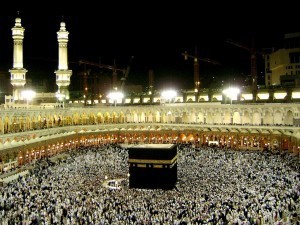 It is a dream of every obedient servant of Allah to spend at least once in a lifetime experience in this beautiful land, Makkah. Why would we want to go to a place known for its heat and overcrowded with people? Coming from a country with the tropical rainforest climate, we would love to avoid countries with hot and dry weather, because we are not used to it. So back to the main topic, why I want to spend my time here in Makkah and be very sure that I will not regret it.
It is a dream of every obedient servant of Allah to spend at least once in a lifetime experience in this beautiful land, Makkah. Why would we want to go to a place known for its heat and overcrowded with people? Coming from a country with the tropical rainforest climate, we would love to avoid countries with hot and dry weather, because we are not used to it. So back to the main topic, why I want to spend my time here in Makkah and be very sure that I will not regret it.
It is the fifth pillars in Islam to visit Makkah to perform rituals known as Hajj at least once in a lifetime, if we can afford and go through it, financially and physically. When we manage to perform Hajj completely, we will be cleansed from sins whereby we are equal to small little babies with no sins at all. Because we humans do mistakes all the time, we need forgiveness from the Almighty Lord to save us in this world and hereafter.
Spending my time in Makkah made me feel closer to my God and also made me feel 100% peaceful at heart. I forgot everything about the world and only stayed focus on worshipping the one and only God who allowed me to come to this world, experience all the beautiful life’s journey. He had given me and chose me to be part of this beautiful religion.
It is very heartbreaking when I saw on the net some people are so ignorant about this religion. They are being so skeptical about us Muslim. If only they understand and did more research on Islam, and not only listen and see us from one side of the media, I can be sure they are going to fall in love with this religion like what I feel right now. I’m so in love.
Quality time spent with the person we love is the most precious moment in our life. What could make our heart become so filled with love other than that right? But, quality time spent to worship my Lord is way beyond that. You never know the feeling until you try it. It feels so heartwarming, sometimes I cry because of my sins, but then, I know, that the Lord is the Most Forgiving one of all, He’ll definitely forgive me. Sitting in front of that simple black cube with gold embroidery in the middle of Masjidil Haram called Ka’aba despite thousands of people around me, still gives me some special feeling that cannot be explained with words. Praying in front of it, very sure that my Lord listen to my prayers and whine, calms my soul and heart.
Makkah, the land of love, gives love not only to people but to the One who created the people. Time spent travelling is not wasted time. Time spent to accept the call from the God to His house, Makkah Al-Mukaramah is so valuable that one will never regret but instead inspire each and every one of us to be a better human.
About the Author: Nor Aqilah Bt Sedek Shah, I’m a 20 years old girl from Malaysia. I love reading people stories and just started to take a step forward to be a traveler. I dream to travel the world to meet a lot of people and help clear the misconception on Islam.
Thank you for reading and commenting. Please enter our next Travel Writing competition and tell your story.
The post Makkah al-Mukaramah, Saudi Arabia:The Land of Love appeared first on We Said Go Travel.
We Said Go Travel
We Said Go Travel is a global community of over sixteen hundred writers with articles from every continent.
Stories are shared with photos and video from a perspective of the transformative power of travel. We Said Go Travel has hosted live and online events as well as travel writing contests around the world. ...more
- Lisa Niver's profile
- 57 followers


